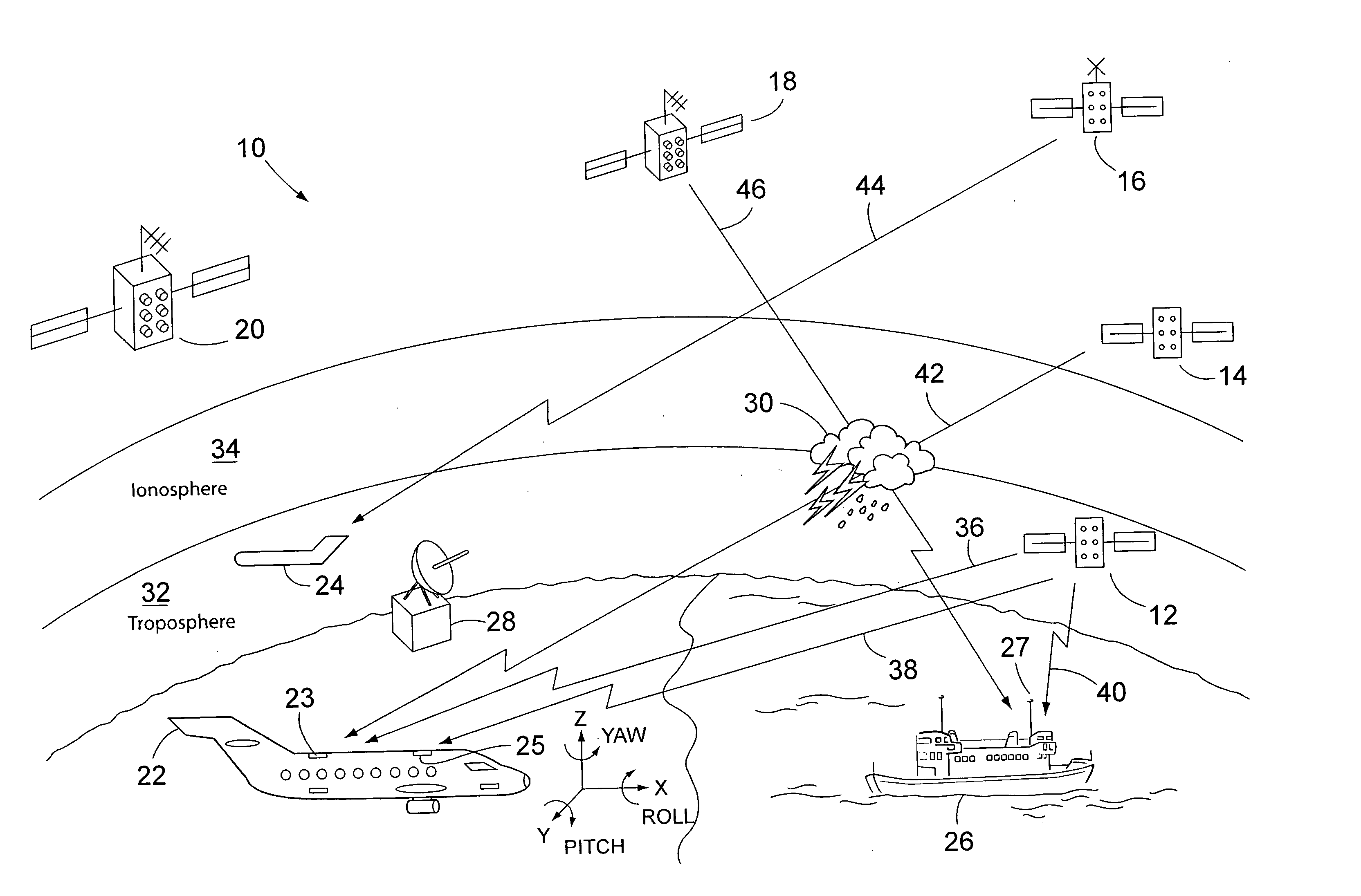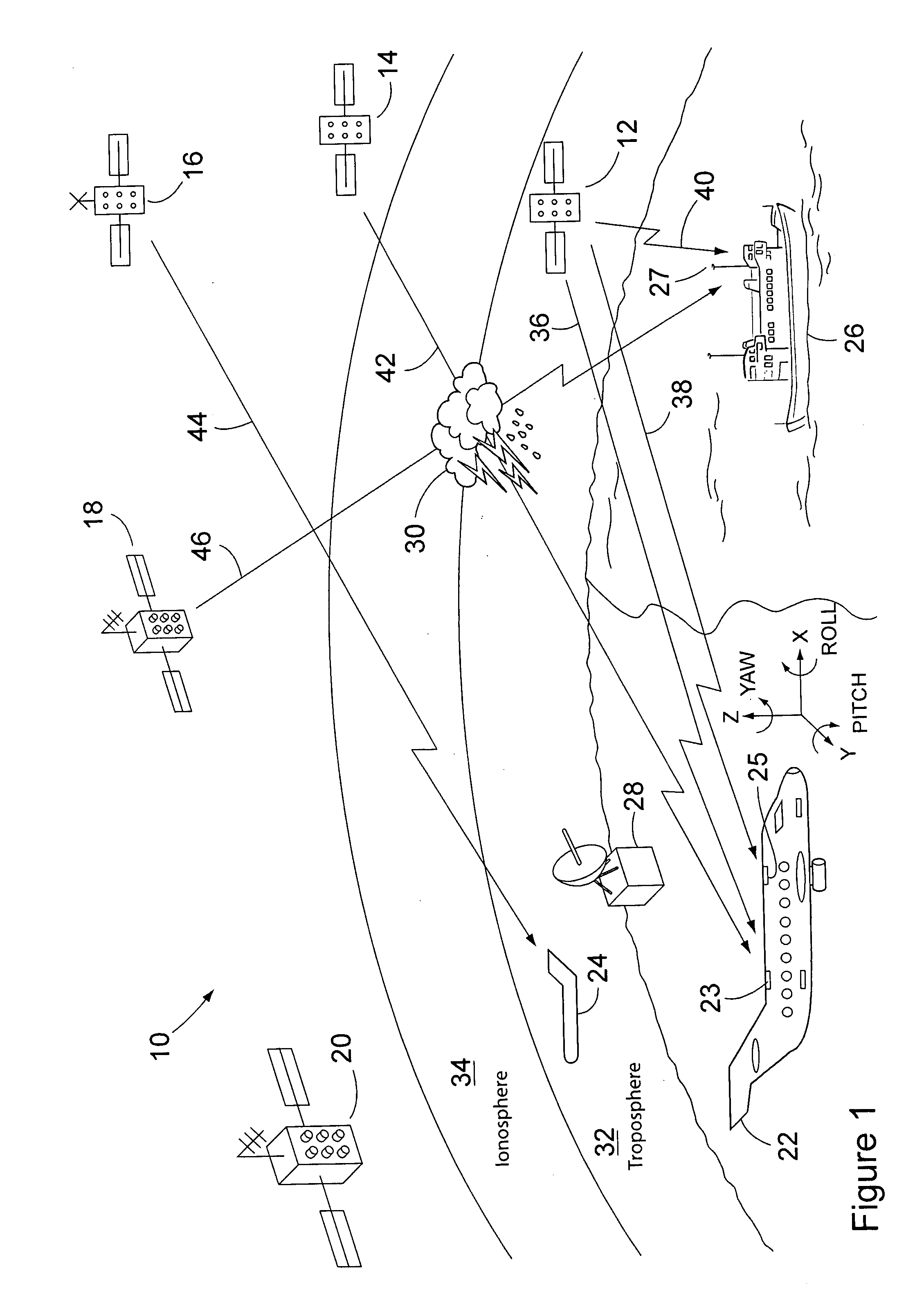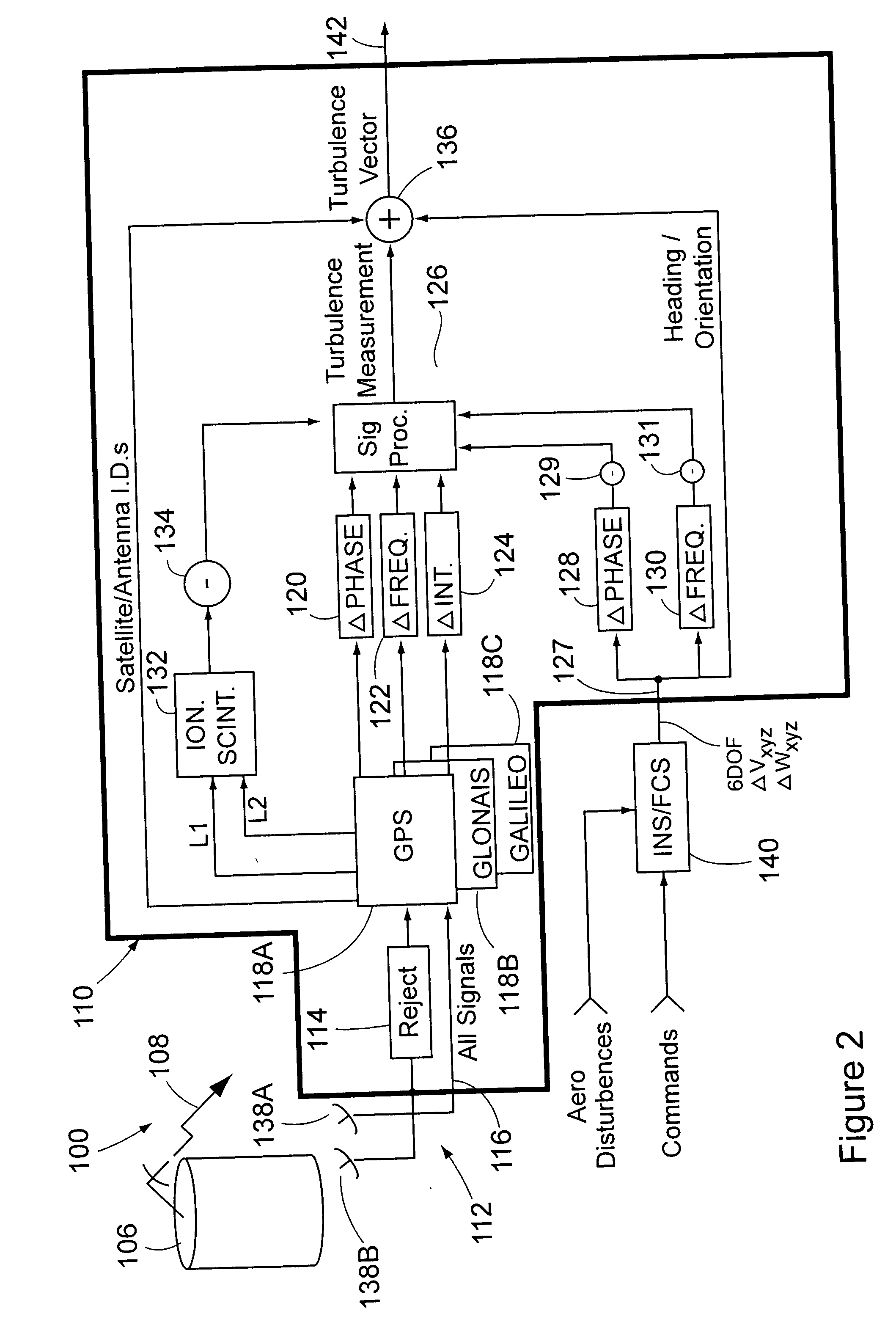System for measuring turbulence remotely
a technology of turbulence measurement and remote measurement, applied in the field of meteorological sensors, can solve the problems of affecting the comfort of passengers, passengers avoiding flying, and the inability to detect or predict clear air turbulence using current technology, so as to improve the accuracy of turbulence measurement, improve the availability of transmitted signals, and improve the coverage of the atmosphere
- Summary
- Abstract
- Description
- Claims
- Application Information
AI Technical Summary
Benefits of technology
Problems solved by technology
Method used
Image
Examples
Embodiment Construction
[0019] Many modern aircraft use radio positioning signals broadcast from satellites (e.g. GPS or GLONASS) for navigation. Atmospheric turbulence can cause the GPS receivers to occasionally lose lock with the signals by corrupting, or altering, the signal to an extent sufficient to render the receiver temporarily inoperative. The problem becomes more pronounced when the transmitting satellite, as seen by the receiver, nears the horizon. Not only does the signal have to traverse a significantly longer path through the atmosphere, but the signal path is likely to penetrate deeply into the troposphere where turbulence can be much more pronounced than in the higher portions of the atmosphere. Also, as the signal path nears the ground, multipathing can occur which further degrades the signal quality. Because turbulence has previously been seen as a problem to be avoided, the receiver antennas are typically configured to reject signals with low elevation angles relative to the horizon.
[00...
PUM
 Login to View More
Login to View More Abstract
Description
Claims
Application Information
 Login to View More
Login to View More - R&D
- Intellectual Property
- Life Sciences
- Materials
- Tech Scout
- Unparalleled Data Quality
- Higher Quality Content
- 60% Fewer Hallucinations
Browse by: Latest US Patents, China's latest patents, Technical Efficacy Thesaurus, Application Domain, Technology Topic, Popular Technical Reports.
© 2025 PatSnap. All rights reserved.Legal|Privacy policy|Modern Slavery Act Transparency Statement|Sitemap|About US| Contact US: help@patsnap.com



